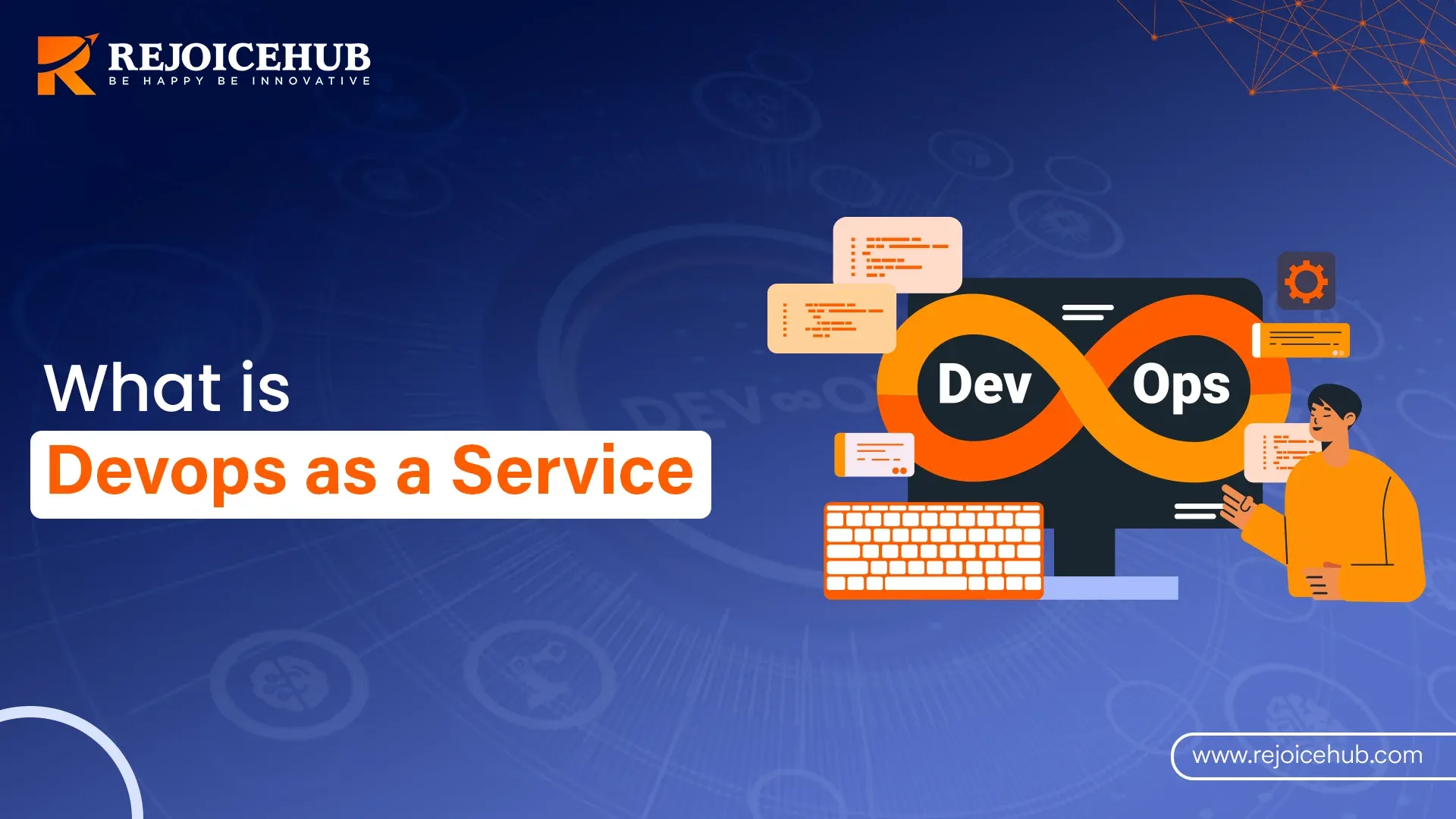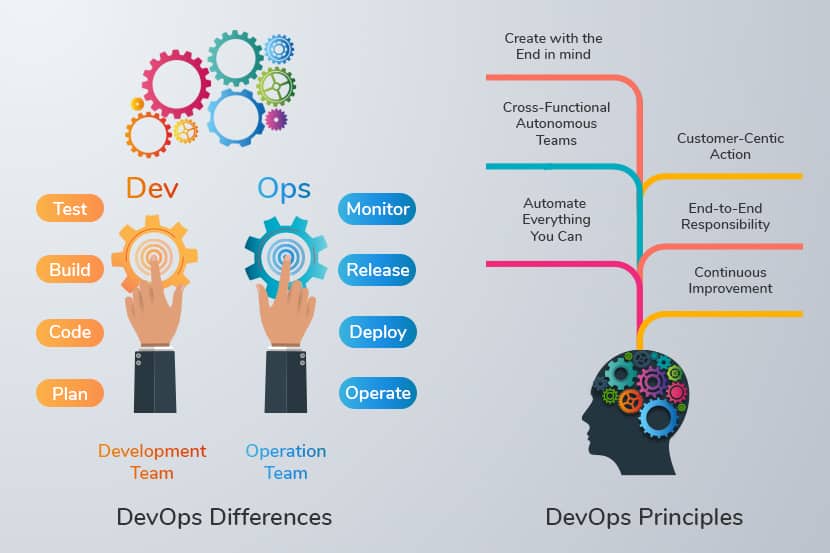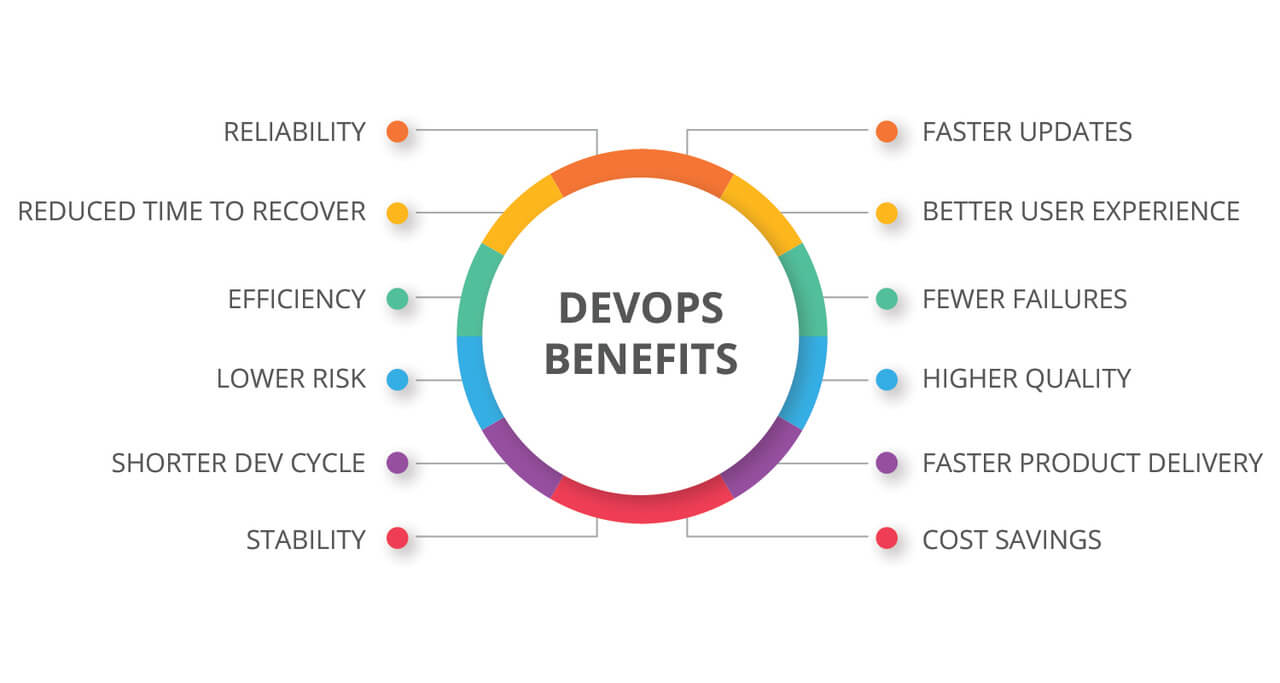
The DevOps as a Service (DaaS) is a cloud-based service that comes with a bunch of tools, processes, and methodologies to help organizations in implementing and improving their DevOps practices. DevOps, which is a combination of development and operations, aims at increasing collaboration and communication between software development and IT operations teams for better efficiency and quality of software delivery.
DevOps as a Service generally offers the platform with several tools for continuous integration, continuous delivery, automated testing, infrastructure as code and other key DevOps practices. The service is hosted in the cloud, which allows the organization to take advantage of the scalability, flexibility, and cost-effectiveness of cloud computing.
1. Understanding DevOps
A. Core Principles of DevOps
 DevOps has its roots in some core values that promote teamwork, automation and continuous improvement. These values include:
DevOps has its roots in some core values that promote teamwork, automation and continuous improvement. These values include:
Collaboration: Silos are to be broken down and there should be a seamless collaboration between the development and operations teams. Automation: Automating manual and repetitive tasks for higher efficiency and less errors. Continuous Integration (CI): Regularly integrating code changes into a shared repository to identify problems early on. Continuous Delivery (CD): Assurance that code is always deployable, meaning it can be released at any point in time. The establishment of the monitoring system for application performance and user experience. leads to Feedback: Implementation of a powerful monitoring system to collect information on applications performance and users experience.
B. Evolution of DevOps
DevOps has undergone a transformation over the years to accommodate the changing requirements of the software development industry. The evolution can be divided into these stages: Traditional Development: Development and operations teams are separated and have manual handovers. Agile Development: Implementation of Agile methodologies, highlighting collaboration and iterative development. DevOps Emergence: Harmonization of development and operations processes for efficiency. Continuous Integration/Continuous Delivery (CI/CD): Testing and deployment pipelines automation for quicker and more dependable releases. DevSecOps: Security practices integration into the DevOps pipeline for better application security.
2. DevOps as a Service (DaaS)
A. Definition of DevOps as a Service
DevOps as a Service is a managed service that provides a wide range of best devops tools, practices and expertise to help organizations in creating and maintaining a DevOps culture. DaaS providers provide the development platform which promotes collaboration, automates processes and guarantees smooth integration across the whole development lifecycle.
Key features of DevOps as a Service may include:

- Continuous Integration/Continuous Delivery (CI/CD): Automation of the whole software development process, from code merging and testing to deployment and delivery.
- Configuration Management: Managing and automating infrastructure through tools like Chef, Puppet, or Ansible to ensure consistency and reliability.
- Containerization and Orchestration: Use of container technologies like Docker and orchestration tools like Kubernetes for effective deployment and scaling of applications.
- Monitoring and Logging: Deploying tools for real-time monitoring, logging, and performance analysis to catch problems early and deal with them.
- Collaboration and Communication: Promoting collaboration between development and operations teams through communication instruments and common dashboards.
- Security: Security practices are integrated throughout the development lifecycle which include code scanning, vulnerability assessments, and compliance checks. Scalability and Flexibility: Utilizing cloud infrastructure to expand resources on-demand quickly and adapt to new requirements easily.
Benefit of devops as a service
 DevOps as a Service (DaaS) offers many advantages to organizations that want to simplify the software development and operational processes. Some of the main benefits include:
DevOps as a Service (DaaS) offers many advantages to organizations that want to simplify the software development and operational processes. Some of the main benefits include:
1. Faster Time-to-Market:
Automation and optimization of the development pipeline, which DevOps as a Service does, results in quickening of software delivery process so that companies can introduce new features and updates into the market quicker.
2. Improved Collaboration:
Development and operations teams focus on collaboration with DevOps practices. DaaS platforms offer the instruments and workflows that support collaboration, enhancing teamwork and shared responsibility at every stage of development.
3.Increased Efficiency:
Automation of repetitive tasks like code integration, testing, and deployment decreases manual errors and gives teams time to concentrate on more crucial parts of development for an overall improved efficiency.
4. Enhanced Quality and Reliability:
CI (Continuous Integration) and CD (Continuous Delivery) practices as well as automated testing, are ways to improve the quality of code and its reliability. Consequently there are less bugs and issues in production environments.
5. Scalability and Flexibility:
DaaS uses cloud infrastructure so that resources can be scaled up or down based on demand by the organizations. This flexibility will enhance scalability for teams to be able to adjust to changing workloads and requirements.
6. Cost Savings:
With cloud-based DevOps services, there is no need for companies to make huge investments in infrastructure and maintenance of DevOps tools. It can lead to cost savings when organizations pay only for what they use on a pay-as-you-go basis.
7. Improved Security:
 Security features are frequently incorporated into the DevOps pipeline by DaaS providers, such as code scanning, vulnerability assessments, and compliance checks.
Security features are frequently incorporated into the DevOps pipeline by DaaS providers, such as code scanning, vulnerability assessments, and compliance checks.
8. Consistent Environment:
DaaS (Development as a Service) configuration management tools are responsible for the uniformity of development, testing, and production environments across platforms. This standardization minimizes deployment risks which may be caused by environment inconsistencies.
9. Enhanced Monitoring and Analytics:
Many times DevOps as a Service will come with powerful monitoring and analytics tools that let companies have better insights on application performance, identify issues in real time and make data driven decisions to improve their processes.
10.Focus on Core Competencies:
Through delegating the management of infrastructure and tooling to a DaaS provider, development teams will focus on coding and creating value for end-users rather than spending their time on operational issues.
D. Challenges of Implementing DevOps as a Service
Organizational Resistance: Resistance to change within organizations can hinder the successful implementation of DevOps practices. Integration Complexity: Integrating DaaS into existing workflows and systems may pose challenges, particularly for legacy applications. Security Concerns: While DaaS platforms include security features, organizations must still address specific security concerns, especially in highly regulated industries. Skills Gap: Organizations may face a skills gap in their teams when adopting new DevOps tools and practices, requiring training and upskilling efforts. Tooling Selection: Choosing the right set of tools for a DaaS platform can be challenging, as the landscape is continually evolving.
3. DaaS Implementation Strategies
A. Assessing Organizational Readiness
Cultural Assessment: Conduct an assessment on the current culture of the organization and pinpoint the areas which might need adjustment in line with DevOps principles. Skillset Analysis: Analyze the skills and competencies of the existing employees to identify any gaps that should be filled through training or hiring new staff. Infrastructure Evaluation: Review the current infrastructure to find out possible bottlenecks or areas for improvement.
B. Pilot Programs and Incremental Adoption
The process begins with small, well-defined pilot projects, where it can be tested how well DaaS works in this organization. Gradual Development: Slowly increase the DaaS adoption allowing teams to adjust and learn as the implementation moves forward.
C. Collaboration and Communication
Build cooperation by setting up cross-functional teams with representation from development, operations, and other relevant departments. Communication Channels: Establish clear and open communication channels to enable information sharing and feedback.
D. Continuous Learning and Improvement
Introduce training programs to enhance teams on new tools and methodologies introduced by DaaS. Feedback Loops: Formulate feedback loops to collect insights from teams and stakeholders for the continuous improvement of DevOps processes.
4. Case Studies

A. Successful Implementations
Amazon Web Services (AWS): AWS offers a wide range of DevOps tools and services, which allows organizations to construct end-to-end DevOps pipelines on the cloud. Microsoft Azure DevOps: Azure DevOps provides version control, build automation, release management and many other tools in its tool set that can be used for implementing continuous deployment practices.
B. Challenges and Lessons Learned
Etsy, an online marketplace, faced problems with its DevOps practices as it grew and had to change its approach to meet the demands of rapid growth. Target Corporation: Target faced issues in aligning its culture during the DevOps transformation and this underscored the need to handle organizational culture.
5. Future Trends in DevOps as a Service
A. Artificial Intelligence (AI) Integration
 AI integration into DaaS platforms for predictive analytics and intelligent automation.
Automated Troubleshooting: AI-driven automatic issue identification and solutions in the development and operations processes.
AI integration into DaaS platforms for predictive analytics and intelligent automation.
Automated Troubleshooting: AI-driven automatic issue identification and solutions in the development and operations processes.
B. Serverless Computing
The serverless computing models are being adopted for improved scalability and cost efficiency. Event-Driven Workflows: Utilization ofThis can be done through DevOps as a Service where organizations can speed up their software development and deployment processes, reduce time-to-market and improve overall operational efficiency.
This approach allows teams to concentrate on building and delivering high-quality software while the management of underlying infrastructure and tooling is outsourced to the DevOps service provider.
